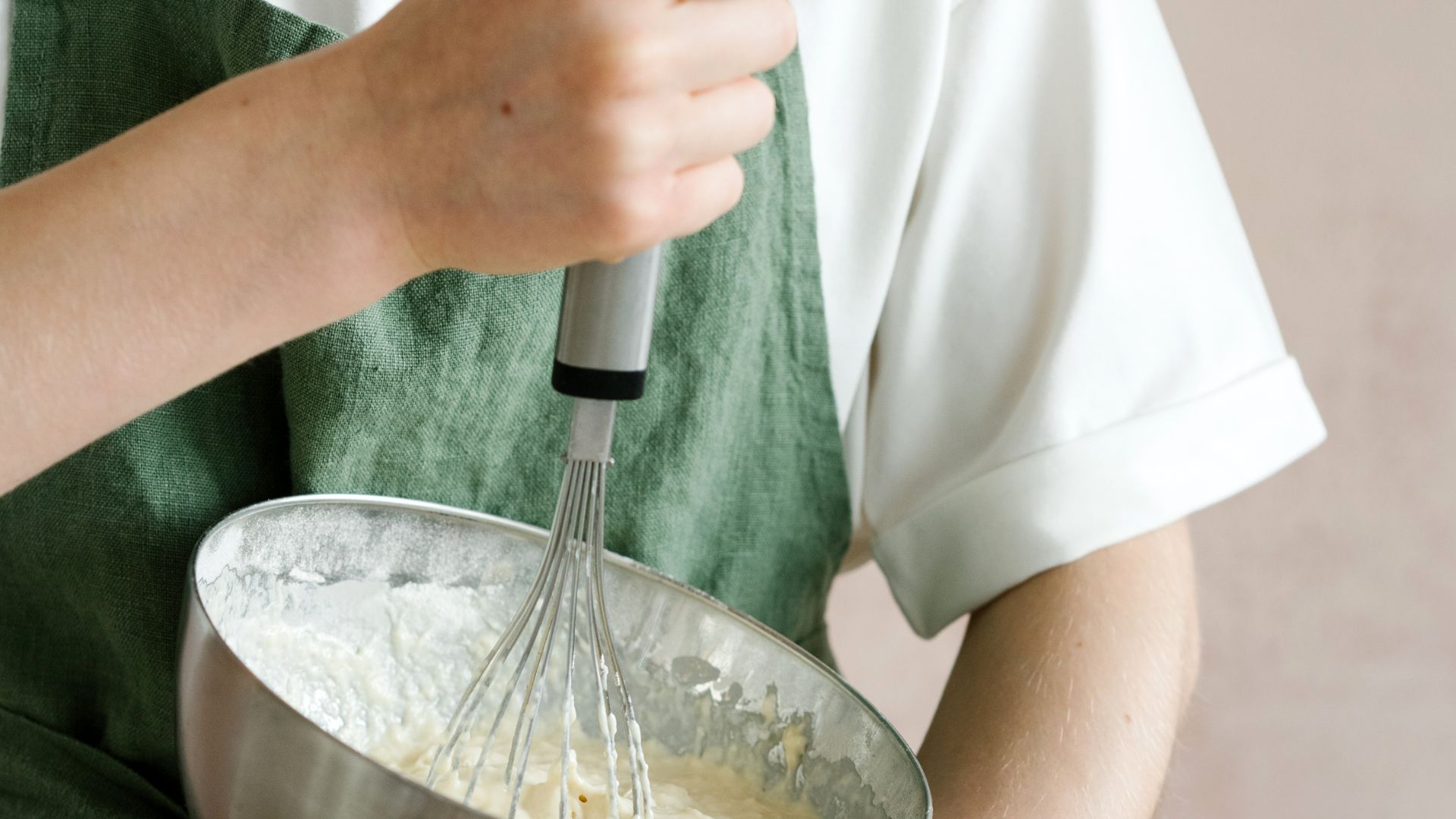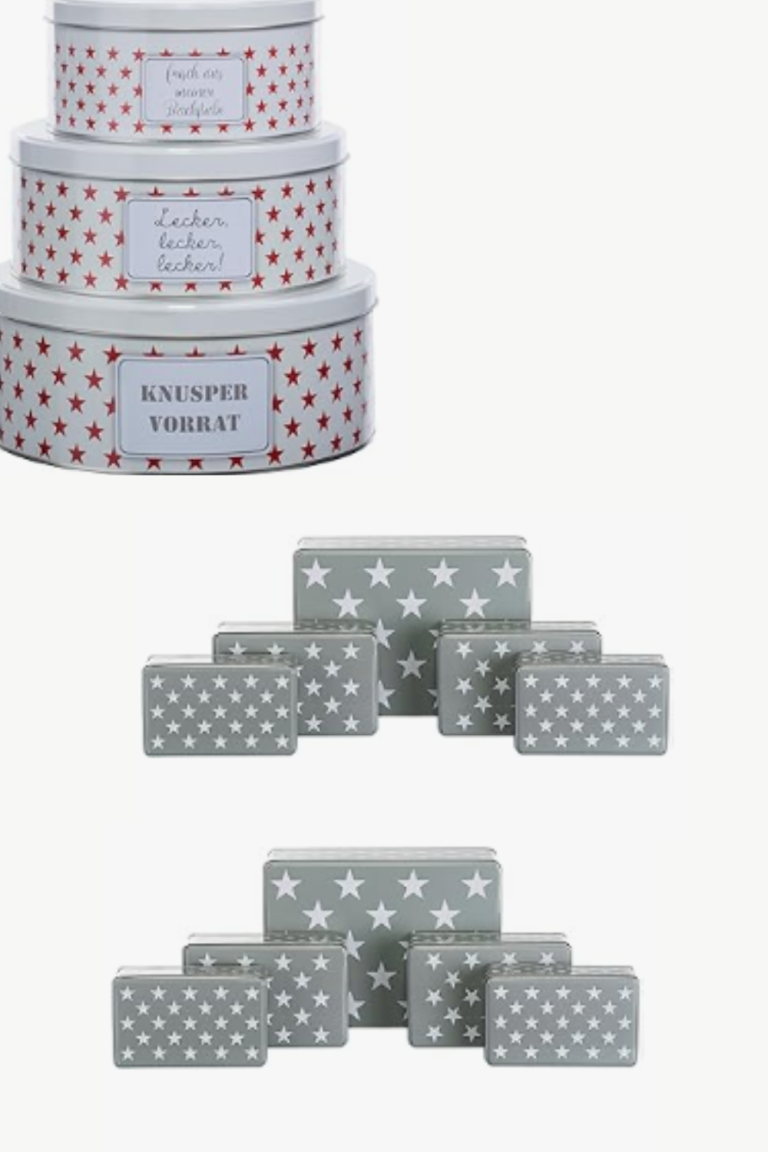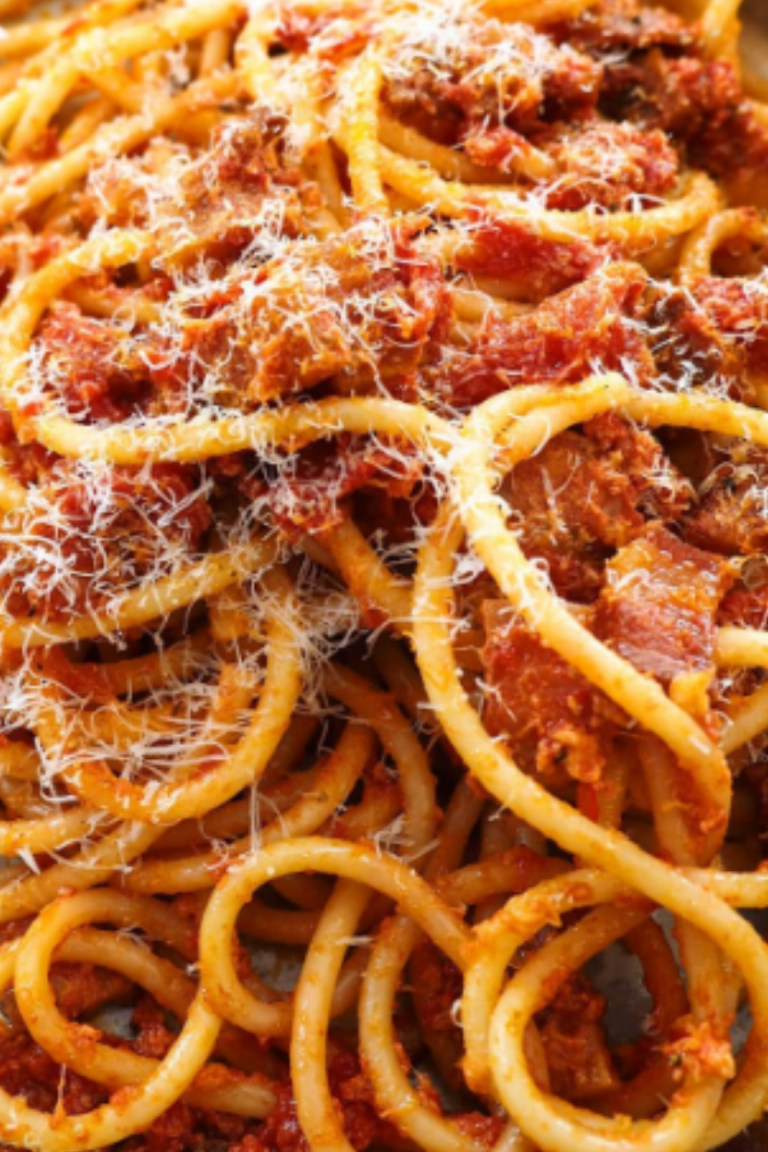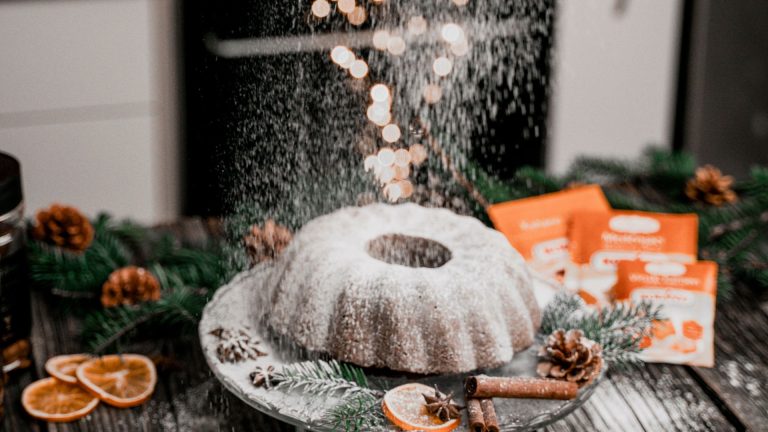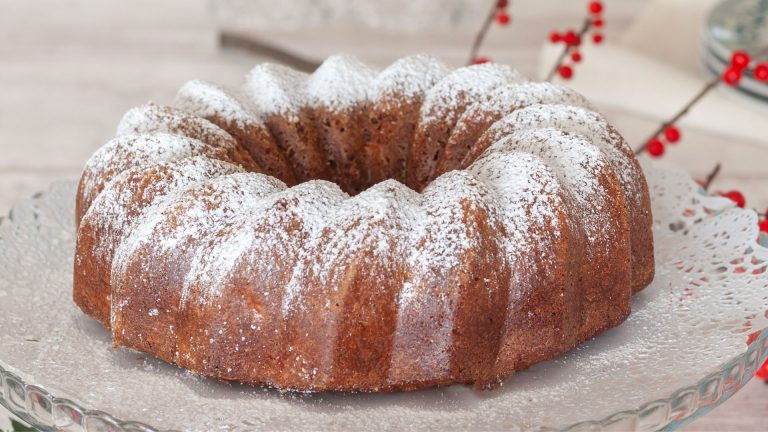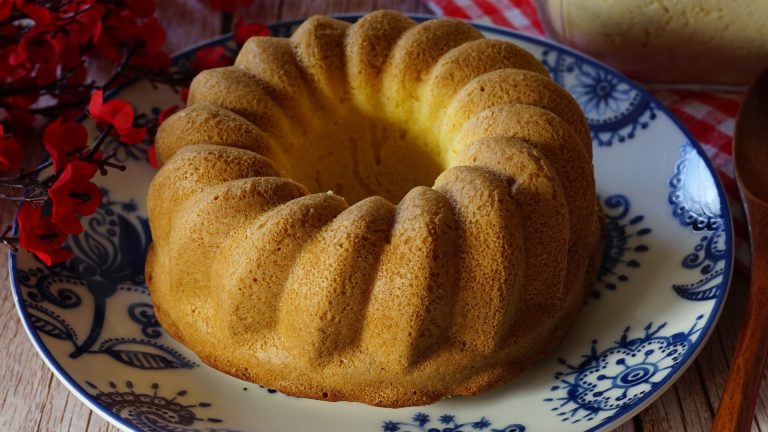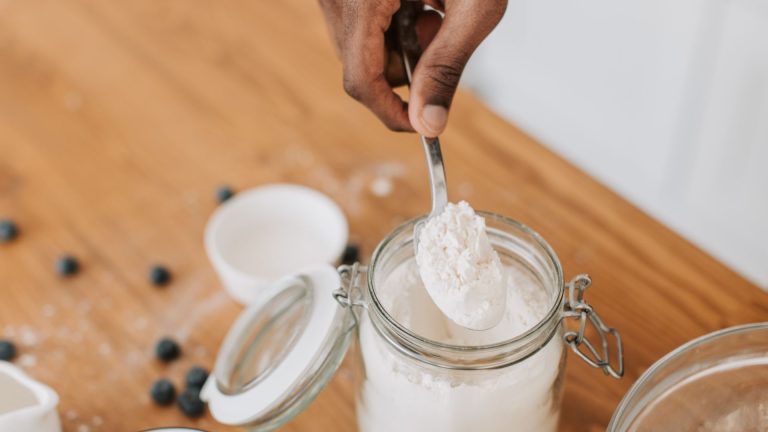MIX: Mixing role in cake making Explained
Table of Contents
ToggleWhat is Mixing?
Mixing is the process of combining ingredients until they are evenly distributed. It’s a crucial step in baking that affects the texture, flavor, and overall success of your cake.== >> Check out the right cake Mixing tools and ingredients that you need here
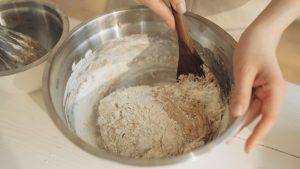
The Role of Mixing in Cake Making
Incorporating Air
Mixing helps incorporate air into the batter, which is essential for a light and fluffy cake. The more air you mix in, the more your cake will rise and become tender.
Combining Ingredients
Proper mixing ensures all ingredients are well combined, preventing lumps and ensuring an even distribution of flavors and textures.
Developing Gluten
For cakes, you want just the right amount of gluten development. Too much mixing can lead to a tough cake, while too little can result in a crumbly one.== >> Check out the right cake Mixing tools and ingredients that you need here
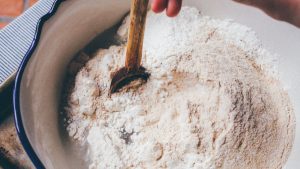
Tips for Perfect Mixing
- Use the Right Tools: A whisk, hand mixer, or stand mixer can each offer different results. Choose based on your desired texture.
- Follow the Recipe: Mixing times and speeds can vary. Stick to the recipe to avoid over or under-mixing.
- Scrape the Bowl: Regularly scrape the sides of your mixing bowl to ensure even mixing.
Mastering the art of mixing is key to becoming a successful baker. With the right technique, your cakes will turn out beautifully every time. Whether you’re a novice or a seasoned baker, understanding mixing can elevate your baking game to new heights.== >> Check out the right cake Mixing tools and ingredients that you need here
Effects of Overmixing
Tough Texture
Overmixing leads to excessive gluten development, making the cake dense and chewy instead of light and fluffy.
Loss of Air
The more you mix, the more air you lose, resulting in a flat and compact cake.
Dryness
Too much mixing can cause the cake to dry out, as the structure becomes too tight to retain moisture.
Uneven Baking
Overmixed batter can bake unevenly, leading to a cake that’s cooked on the outside but undercooked in the center.
How to Avoid Overmixing
- Mix Until Just Combined: Stop mixing as soon as the ingredients are incorporated.
- Use Low Speeds: Keep your mixer on a low setting to control gluten development.
- Watch the Texture: Keep an eye on the batter’s consistency to prevent overworking it.
Common Cake Mixing Mistakes and How to Avoid Them
Baking a cake might seem straightforward, but mixing is where many things can go awry. Here are some common mistakes to watch out for and tips on how to avoid them:
1. Overmixing the Batter
Mistake: Mixing the batter too long develops excess gluten, leading to a dense, tough cake.
Solution: Mix just until ingredients are combined. The batter should be smooth but still slightly lumpy.
2. Undermixing
Mistake: Not mixing enough can leave pockets of unmixed flour or other ingredients, resulting in a lumpy texture or uneven flavor.
Solution: Make sure to scrape down the sides of your mixing bowl and ensure all ingredients are fully incorporated, but avoid overmixing.
3. Incorrect Mixing Speed
Mistake: Using high speeds when a lower speed is needed can incorporate too much air, or in some cases, cause ingredients to splatter.
Solution: Use a low speed for combining ingredients and only increase speed if necessary, such as when beating egg whites to stiff peaks.
4. Not Using Room Temperature Ingredients
Mistake: Cold ingredients, especially butter and eggs, can cause the batter to curdle or not mix properly.
Solution: Allow ingredients like butter, eggs, and milk to come to room temperature before mixing.
5. Adding Ingredients in the Wrong Order
Mistake: Adding dry ingredients too early or not following the recipe’s sequence can lead to uneven distribution or incorrect texture.== >> Check out the right cake Mixing tools and ingredients that you need here
Solution: Follow the recipe’s instructions carefully. Typically, you should cream the butter and sugar first, then gradually add eggs and dry ingredients.
6. Mixing Different Types of Flour
Mistake: Using different flours (like cake flour and all-purpose flour) without adjusting the mixing method can affect the cake’s structure.
Solution: Stick to the flour type specified in the recipe and mix accordingly.
7. Not Measuring Ingredients Accurately
Mistake: Incorrect measurements can lead to an imbalance in the batter, affecting the final texture and taste.
Solution: Use proper measuring cups and spoons and level off dry ingredients with a straight edge.
8. Ignoring Recipe Instructions
Mistake: Straying from the recipe’s instructions can lead to unforeseen issues, such as improper mixing times or ingredient ratios.
Solution: Always read and follow the recipe closely to ensure the best results.== >> Check out the right cake Mixing tools and ingredients that you need here
comparison tabular
Here’s a comparative table highlighting key points and considerations for effective cake mixing:
| Aspect | Correct Mixing | Overmixing | Undermixing |
|---|---|---|---|
| Texture | Light, fluffy, and tender cake | Dense, chewy, and tough cake | Lumpy, uneven texture |
| Gluten Development | Just enough gluten for structure | Excessive gluten, leading to a tough cake | Inadequate gluten development, potentially crumbly |
| Air Incorporation | Properly incorporated air for leavening | Loss of air, resulting in a flat cake | Insufficient air, causing a denser cake |
| Batter Consistency | Smooth with a few small lumps | Overly smooth or pasty | Lumpy and uneven |
| Mixing Time | Follow recipe instructions; mix until just combined | Mixes too long; continues beyond when ingredients are combined | Mixes too briefly, not fully combined |
| Speed | Low to medium speed for even mixing | High speed can lead to overmixing | Low speed might not adequately combine ingredients |
| Ingredient Temperature | Ingredients at room temperature for even mixing | Temperature usually not an issue, but consistency can be off | Cold ingredients may not mix well |
| Ingredient Order | Add ingredients as per recipe order | May lead to improper texture if order is ignored | Incorrect order can lead to uneven mixing and texture |
| Measuring Accuracy | Accurate measurements for balanced results | Mis-measuring can exacerbate overmixing issues | Inaccurate measurements can lead to incomplete mixing |
Key Notes and Considerations
- Texture: Proper mixing yields a cake with the ideal texture. Overmixing creates a dense cake, while undermixing leads to an uneven texture.
- Gluten Development: Balancing gluten development is crucial. Overmixing can overdevelop gluten, making the cake tough. Undermixing can result in a cake that doesn’t hold together well.
- Air Incorporation: Air is essential for a light cake. Proper mixing incorporates enough air, while overmixing can cause it to escape, and undermixing might not incorporate enough.
- Batter Consistency: The batter should be smooth but not overworked. Overmixing can make the batter too smooth or pasty, while undermixing can leave lumps.
- Mixing Time and Speed: Follow recipe instructions for the correct mixing time and speed. Overmixing usually results from mixing too long or at too high a speed, while undermixing may be due to inadequate mixing time or speed.
- Ingredient Temperature: Room temperature ingredients mix more evenly. Cold ingredients can cause issues in both overmixing and undermixing scenarios.
- Ingredient Order: Adding ingredients in the correct order helps achieve the best texture and consistency. Deviations can lead to issues with mixing and texture.
- Measuring Accuracy: Accurate measurements are crucial. Mis-measuring can exacerbate the effects of overmixing or undermixing.== >> Check out the right cake Mixing tools and ingredients that you need here
FAQs on Cake Mixing
1. What is the best way to avoid overmixing?
To avoid overmixing, mix your batter just until the ingredients are combined. Stop mixing as soon as you no longer see dry flour or lumps. Using a lower speed on your mixer can also help control the mixing process.
2. How can I tell if my cake batter is properly mixed?
Properly mixed batter should be smooth with a few small lumps, depending on the recipe. It should have a consistent texture throughout. If your batter is too lumpy or too smooth, it might be under or overmixed.
3. Why is my cake dense and tough?
A dense and tough cake is often the result of overmixing, which develops too much gluten. Make sure to mix just until the ingredients are combined to avoid this issue.
4. What should I do if my batter is too thick?
If your batter is too thick, it might need more liquid. Add a small amount of milk or other liquid as specified in the recipe, mixing gently until the desired consistency is achieved.
5. Can I use a food processor for mixing cake batter?
A food processor can be used for mixing cake batter, but it’s easy to overmix with this tool. Use short pulses and check the batter frequently to avoid overmixing.
6. How do I fix a lumpy cake batter?
If your batter is lumpy, gently mix it by hand to break up the lumps. Be careful not to overmix. If lumps persist, you may need to strain the batter through a fine sieve.
7. Does the type of flour I use affect mixing?
Yes, different types of flour affect mixing. For example, cake flour leads to a lighter cake, while all-purpose flour may produce a denser texture. Follow the recipe’s flour recommendations for best results.
8. How can I ensure even mixing when using a hand mixer?
When using a hand mixer, scrape the sides of the bowl regularly and mix in a steady, even motion. Keep the mixer on a low to medium speed to avoid splattering and overmixing.
Final Words
Mixing might seem like a simple step in baking, but it plays a pivotal role in determining the texture and quality of your cake. By understanding the effects of overmixing and undermixing, and following best practices, you can master this crucial skill and achieve consistently delicious results. Remember, the key is balance: mix just enough to combine your ingredients effectively without compromising the light and airy texture that makes cakes so delightful. Happy baking.

Hi!
I’m Mike, the creator of Forum Foodies. In my own personal experience, understanding ingredients is key to great cooking.
Forum Foodies offers guides on various ingredients, from staples to exotic finds. Join our community, share your experiences, and learn from fellow food lovers.
Have questions or suggestions? Email me at info@forumfoodies.com. Let’s embark on this delicious adventure together.
Happy cooking.
Mike/
Related Posts
- SCO: Scooping role in cake making Explained
In the world of cake making, every little detail matters. One technique that might seem…
- SLC - Slicing role in cake making Explained
When it comes to baking, the art of slicing can make or break the final…
- BRU: Bruising Role in Cake Making Explained
When it comes to baking, it’s easy to get caught up in the complexities of…
- CUT - Cutting role in cake making Explained
In this topic, I’m going to talk about the often-overlooked but crucial aspect of cake…
- TMP: Tempering Role in Cake Making Explained
In this topic, I’m going to talk about tempering, a technique that’s often overlooked but…
- FOLD: Folding role in cake making Explained
In this blog, I’ll talk about the art of folding and its crucial role in…
- BSH: Basting role in cake making Explained
In this topic, I'll talk about BSH basting and its role in cake making, sharing…
- FZ: Freezing role in cake making Explained
In this topic, I’m going to talk about the role of freezing in cake making,…
- FRY: Frying Role in Cake Making Explained
In this topic, I'm going to talk about a fascinating technique in cake making: frying.…
- GRD: Grating role in cake making Explained
When it comes to cake making, it's often the little details that make a big…
- DST: Dusting role in cake making Explained
In this topic, I’m going to talk about dusting and its crucial role in cake…
- SPN: Spoon role in cake making Explained
Hey there, cake lovers. In this topic, I'm going to talk about the humble spoon…
- PST: Pastry Role in Cake Making Explained
When it comes to baking, pastries are often thought of as their own special category,…
- SCR - Scoring Role in Cake Making Explained
When it comes to cake making, every detail matters, from the ingredients you use to…
- PSG - Pasting role in cake making Explained
In this topic, I’m going to talk about PSG (Pasting) and its crucial role in…

